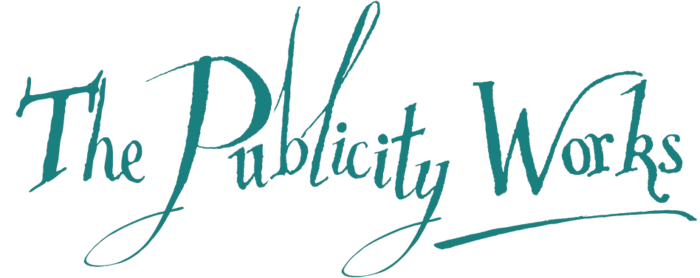The latest MTR from Winterhalter breaks new ground: Perfect wash results in high-capacity warewashing, twice the throughput, and staff costs halved.
As one of Europe’s largest catering equipment hire companies, Jones Hire is a phenomenon. The South London business supplies contract caterers throughout the UK and sometimes Europe, particularly at the quality end of the market. Certainly in London there won’t be many A-list celebs, royalty or politicians who haven’t eaten off Jones Hire’s plates, drunk from their glasses or wiped lips on their napkins at one time or another.
The flow of tableware through the company’s South London base is huge. And at times it seems there are a lot more dirty dishes coming back than clean ones going out. So it’s no surprise that warewashing is the busiest and most labour-intensive of all the company’s operations.
Last year Jones Hire’s general manager, Tim Edwards, took the decision to upgrade the company’s warewashing systems, substantially unchanged for ten years. “Our existing rack washers were coming to the end of their working life, and nothing lasts for ever,” he said. “I wanted to see what was new in the warewashing world.”
In particular, he wanted to address staffing costs. When a big hire contract returned to the company’s warehouse, there might be up to 13 staff on a single machine. Two or three would be emptying, stacking and loading the dirty plates, one would be supervising/checking the wash procedure and dosing, while several at the end would be checking, wiping and stacking the clean items. Finally, one person would be wrapping stacked plates and crating them. For glassware, the problem would be more labour-intensive at this stage, since every single glass required polishing and careful inspection for marks and chips.
We have very strict quality control, so we’d need two shifts working back-to-back to cope with busy periods,” he added.
Since Jones Hire focuses on the top end of the catering hire market, not only is its quality control tight, but the range of tableware includes many high-quality, delicate and expensive items. This is a particular issue with designer tableware from names such as John Rocha and Jasper Conran. Glassware and crockery at this level can be not only expensive, but also quite fragile – particularly decorated ware.
So, conscious that in the last few years warewashing has moved on, Tim Edwards looked for replacements to his existing systems. One hope was that glasses and plates could emerge not only spotless, but dry too. It’s been a dream for the warewashing industry for some years.
“Last year Winterhalter told me they’d finally solved this problem,” he says. “They said that with the right water treatment, chemicals and configuration, for the first time I could get a rack machine that would wash and dry perfectly, without wiping.”
With so much at stake for Jones Hire, Tim Edwards flew to Winterhalter’s HQ and research centre in Germany to test the new claims.
A key point of the new system is that Winterhalter are now controlling the entire warewashing chain, from water purification and chemicals through to a brand new drying module and longer rack output tray. This has allowed them to perfectly optimise Winterhalter’s large-scale MTR rack warewasher and make it a complete washing solution for alltableware and utensils.
And he was one of the first to see the latest Winterhalter technology, which included new versions of water purification, chemical dispensing, wash jet and a brand new ‘air blade’ drying module for the MTR.
“I was amazed,” said Tim Edwards. “It really could wash everything in the one machine – plates, glasses, cutlery, flatware, utensils. Everything came out dry, or almost dry so that it was ready to stack by the time it got to the end of the output line.”
The drying module is the latest component to the MTR, using a special patented ‘air knife’ technology that leaves the items in perfect condition as they emerge. It’s combined with a longer exit path, to allow a little extra time for the final evaporation process.
In addition to the obvious reduction in staffing costs and time he noticed another big saving – tea towels or drying cloths were now redundant, since no polishing was needed after washing. This was a substantial saving in itself, and it made the results even more hygienic. Tim Edwards returned to London very impressed. “Revolutionary wasn’t an exaggeration,” he said.
Recently Jones Hire became the world first customer of the new-generation MTR machines, installing one alongside its older machines.
Overnight, it had a major impact on Jones Hire’s business. Staffing costs are lower – what previously took two back-to-back shifts can now be done in a single shift, and with half the staff. Hygiene control is easier, since drying cloths are a potential weak point of the hygiene chain. And internal laundry bills have been slashed.
Tim Edwards quickly nodded through an order for two more of the do-anything MTR machines. And studying the figures, he says that the new system is paying for itself in only a year.
“Perhaps the biggest difference we’ve noticed is in the glassware,” he says. “It’s a real breakthrough, because you can put a dirty glass in at one end, and it comes out perfectly clean and shiny-dry at the other end. We’ve never seen that in glass washing before. And it does it for all our glasses, including the delicate designer ware.”
Jones Hire is a tough customer for any warewashing operation because of their almost fanatical quality control. “Every item has to be perfectly clean when we deliver it,” says Tim Edwards. “This isn’t only to please the customer, it’s to speed up service. A perfectly clean glass, plate or fork is ready to be placed or used immediately. Anything that needs further polishing when it’s delivered wastes the caterer’s time. Our fussiness can save them time and worry.”
Tim Edwards cites Winterhalter’s professional support as crucial in the transition to the new system. “The backup had to be there for our systems to work,” he says. “We are constantly introducing new types of glassware and tableware and take Winterhalter’s advice on settings in the machine, for example.”
There’s an almost ’surgical’ level of chemicals dosing, installed by the company’s Winterhalter Chemicals arm. This is accompanied by regular two-hourly checks by the staff, to ensure chemicals are being used at the correct rate. Too much dispensing can be as ineffective as too little, leaving residue on the tableware.

